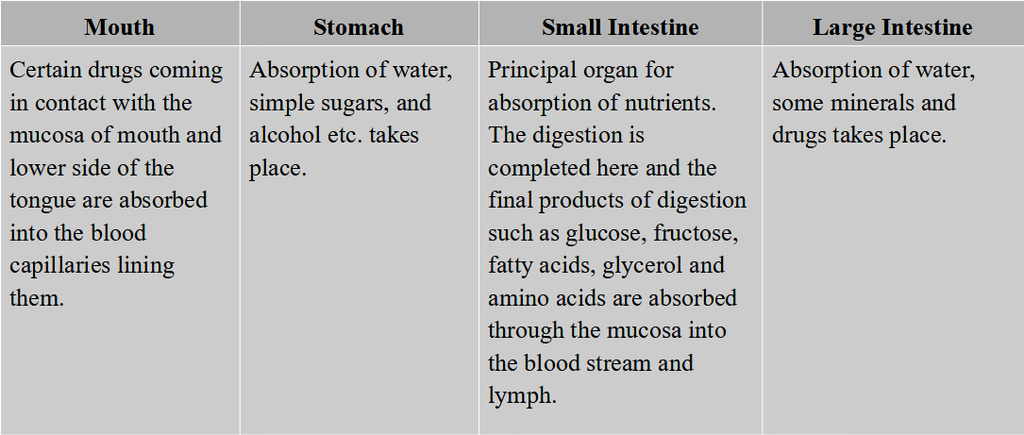- Books Name
- ACME SMART COACHING Biology Book
- Publication
- ACME SMART PUBLICATION
- Course
- CBSE Class 11
- Subject
- Biology
Absorption of digested products
Absorption is the process by which the end products of digestion pass through the intestinal mucosa into the blood or lymph.
It is carried out by passive, active or facilitated transport mechanisms.
The passage of various substances into the blood depends upon the concentration gradients.
However, some of the substances like fructose and some amino acids are absorbed with the help of the carrier proteins.
This mechanism is called the facilitated transport.
Transport of water depends upon the osmotic gradient.
Active transport occurs against the concentration gradient and hence requires energy.
Various nutrients like amino acids, monosaccharides like glucose, electrolytes like Na+ are absorbed into the blood by this mechanism.
Fatty acids and glycerol being insoluble, cannot be absorbed into the blood.
They are first incorporated into small droplets called micelles which move into the intestinal mucosa.
They are re-formed into very small protein coated fat globules called the chylomicrons which are transported into the lymph vessels (Iacteals) in the villi.
These lymph vessels ultimately release the absorbed substances into the blood stream.
Absorption of substances takes place in different parts of the alimentary canal, like mouth, stomach, small intestine and large intestine.
However, maximum absorption occurs in the small intestine. A summary of absorption (sites of absorption and substances absorbed) is given in table.
Table: The Summary of Absorption in Different Parts of Digestive System

The absorbed substances finally reach the tissues which utilise them for their activities. This process is called assimilation'
The digestive wastes, solidified into coherent faeces in the rectum initiate a neural reflex causing an urge or desire for its removal.
The egestion of faeces to the outside through the anal opening (defaecation) is a voluntary process and is carried out by a mass peristaltic movement.

 ACME SMART PUBLICATION
ACME SMART PUBLICATION
